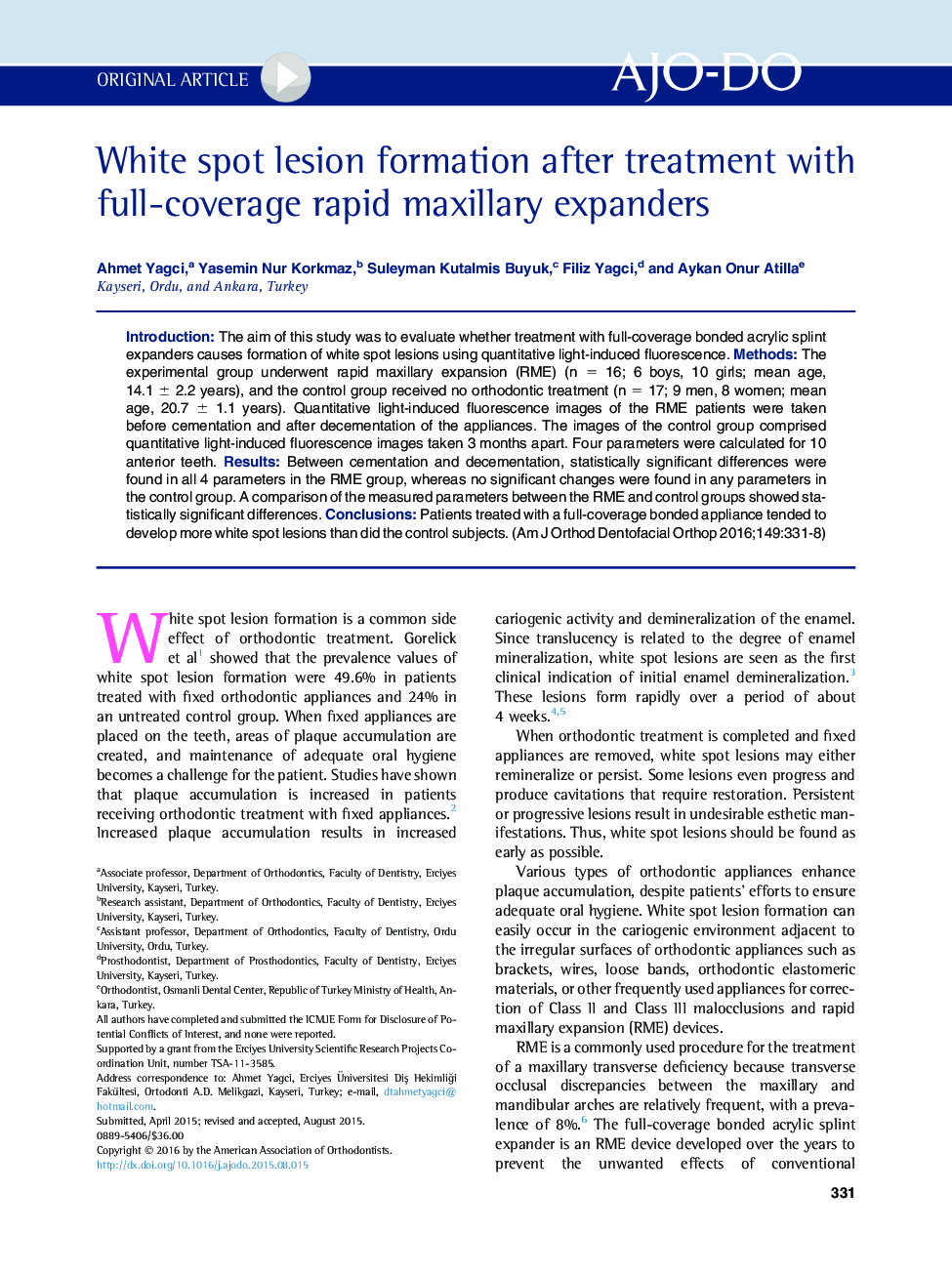| Article ID | Journal | Published Year | Pages | File Type |
|---|---|---|---|---|
| 3115508 | American Journal of Orthodontics and Dentofacial Orthopedics | 2016 | 8 Pages |
•We used bonded full-coverage appliances for rapid maxillary expansion.•We applied glass ionomer cement to bond the appliances.•White spot lesion formation was examined by quantitative light-induced fluorescence.•Full-coverage appliances may cause white spot lesions.
IntroductionThe aim of this study was to evaluate whether treatment with full-coverage bonded acrylic splint expanders causes formation of white spot lesions using quantitative light-induced fluorescence.MethodsThe experimental group underwent rapid maxillary expansion (RME) (n = 16; 6 boys, 10 girls; mean age, 14.1 ± 2.2 years), and the control group received no orthodontic treatment (n = 17; 9 men, 8 women; mean age, 20.7 ± 1.1 years). Quantitative light-induced fluorescence images of the RME patients were taken before cementation and after decementation of the appliances. The images of the control group comprised quantitative light-induced fluorescence images taken 3 months apart. Four parameters were calculated for 10 anterior teeth.ResultsBetween cementation and decementation, statistically significant differences were found in all 4 parameters in the RME group, whereas no significant changes were found in any parameters in the control group. A comparison of the measured parameters between the RME and control groups showed statistically significant differences.ConclusionsPatients treated with a full-coverage bonded appliance tended to develop more white spot lesions than did the control subjects.
